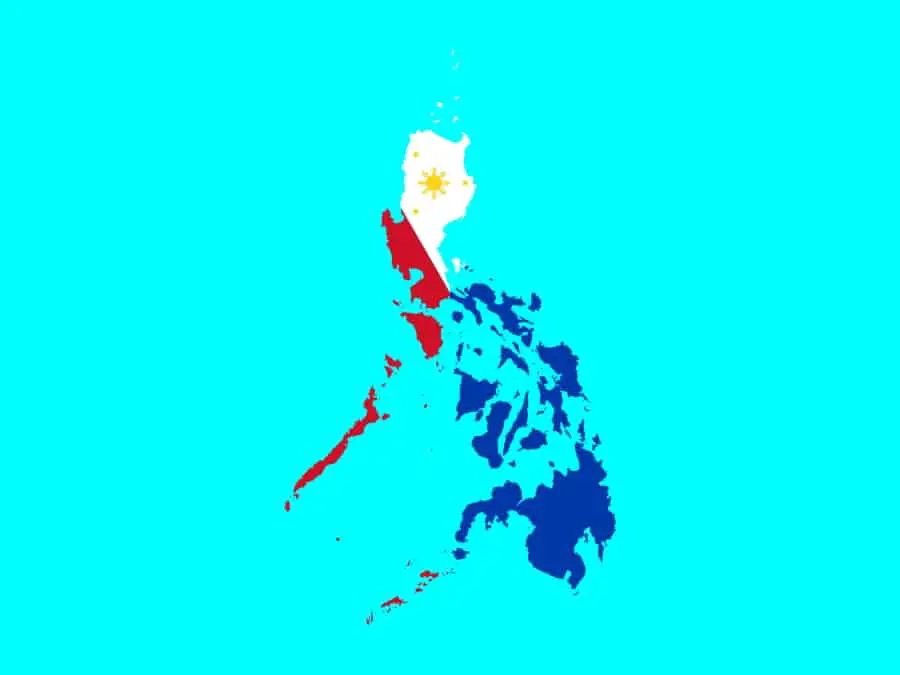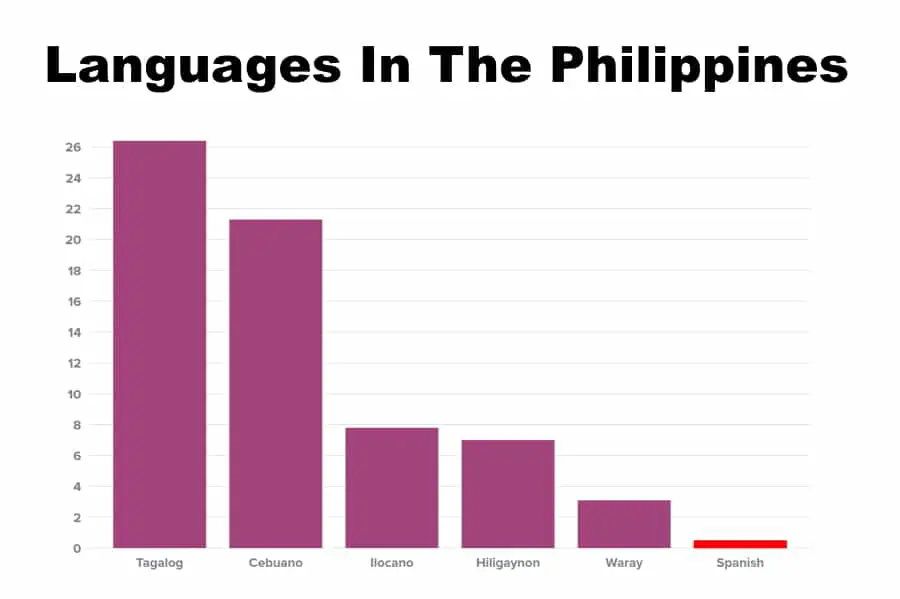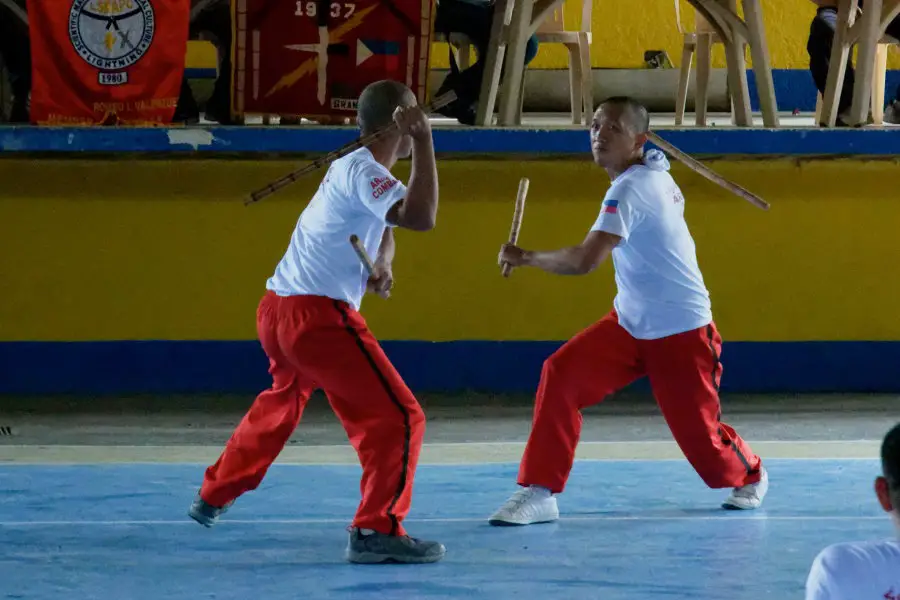The Philippines has had a lot of influences to its languages and cultures over the centuries and even millennia. The languages native to the region have endured through much of it though in many ways significantly altered. One of the major influences has been the Spanish culture and language. So, how common is it to find Spanish in the Philippines?
Spanish is not commonly spoken in the Philippines today. Though Spanish was an official language from 1565 to 1987, it declined rapidly after Spain lost the Spanish-American war and control of the islands in 1898. Currently around 0.5% (<500,000) of the 110 million Filipinos speak Spanish.
Though the use of Spanish has greatly diminished on the islands, most languages used in the nation including English have been greatly influenced by Spanish throughout history in many ways. What affects are there still and how many people speak Spanish in the Philippines today? Let’s find out!

Contents
- 1 Why Isn’t Spanish Widely Spoken In The Philippines?
- 2 What Countries In Asia Speak Spanish?
- 3 Where Do They Speak Spanish In The Philippines?
- 4 Why Does Filipino Sound Like Spanish?
- 5 How Much Of Tagalog Is Spanish?
- 6 Is Spanish Taught In The Philippines?
- 7 Is There Spanish In Filipino Media?
- 8 Is Escrima Spanish? – Spanish In Filipino Martial Arts
- 9 Is Spanish Used In The Workplace in The Philippines?
- 10 The Uncommon Spanish In The Philippines Takeaway…
Why Isn’t Spanish Widely Spoken In The Philippines?
Though there are many lingering aspects of Spanish culture and language in the Philippines, Spanish is not widely heard. There are several reasons for this and much of it resembles the histories of most countries around the world and the human story in general.
Spanish is not widely spoken in the Philippines for many reasons, some of which include: war, a multitude of native ethnic languages, geography, and a more recent development of a national identity. The main cause centers on the establishment of English after the Spanish-American War.
Let’s look at the reasons that you may not find many Spanish speakers if you travel to the Philippines for business or pleasure. For a country that was ruled by Spain for three and a half centuries, there must have been some big reasons for the decline in spoken and written Spanish.
English Supplanted Spanish In The Philippines
War and governmental shifts have been part of most every country on the planet multiple times throughout their histories. Many of those decrying the infiltration of one culture into another through history are doing so from an infiltrating culture that has supplanted another.
This pattern holds true in the Philippines as well. The disjointed islands of the region were brought together under the Spanish crown in 1565. Then a few centuries later, the Spanish came up the losers of the Spanish-American War and the controlling government switched hands.
Americans took control of the Philippines from the Spanish in 1898. Through the American influence, English began the process of pushing out the need for Spanish and by 1935 English was added as an official language. Spanish is rarely heard or used on the islands today.
This doesn’t mean that native languages disappeared all together. On the contrary, only portions of the population speak any given language and no one language has the majority in the country.
What this all means for finding Spanish in the Philippines is that you will need to look fairly hard to find it, and when you do it will not be the same Spanish you find in Mexico, Argentina, or Spain.
What Does The Philippines Look Like And How Does It Affect Language?
Geography is a subject that is sorely lacking in many school systems around the world. Understanding a place like the Philippines, their language, and culture requires specific knowledge of its geographical makeup. If that is the case, then what does the Philippines look like?
The Philippines is a series of 7,640 islands in the South Pacific. Only around 2,000 of them are inhabited today. They were not unified in language or government until the Spanish came in the 16th century. Spanish became the official language of all the islands together until it was removed in 1987.
The distances between these islands are in some places substantial and for former generations further barred by dangerous stretches of ocean. What this means for language development can be summed up in one word: fragmentation.
The amount of variation in language in the nation as a whole is understandable when the geography of the region is taken into account. Many countries may have several differing dialects of the same language, but in the Philippines these are considered by many Filipinos as separate languages.
Since the unification of the islands under Spanish rule there has been a consistent unity and subsequent adoption of a universal language along side other official designations like Spanish and English. Though this language is Filipino (a modern derivative of Tagalog) it is still only claimed as natively spoken in the home by 37.8 percent of Filipinos.
How Many Languages Besides Spanish Are There In The Philippines?
With such a tumultuous history, varied influences, and vast separated geography, what does the language landscape look like in such a place? As you might expect, there are many languages and don’t tell Filipinos that they are dialects. Most won’t agree.
There are two official languages in the Philippines: Filipino and English. There are also 192 languages spread across the roughly 2,000 inhabited islands. No language has the majority of speakers. Native Filipino only claims 37.8% with English touting nearly the same number, but as a second language.
Though this 192 number is reported widely, some give the number as 120 or 170. There are not official classifications. According to the 2000 census conducted by the Republic of the Philippines, Statistical National Authority, the top 10 languages that are considered the base or most used languages in the country are as follows…
| Language | Number Of Speakers |
| Tagalog | 26,387,855 |
| Cebuano | 21,340,000 |
| Ilocano | 7,779,000 |
| Hiligaynon | 7,000,979 |
| Waray | 3,100,000 |
| Bikolano | 2,500,000 |
| Kapampangan | 2,480,000 |
| Pangasinan | 2,434,086 |
| Maranao | 2,150,000 |
| Tausug | 1,822,000 |
One language that is conspicuously missing is Spanish. The Spanish speaking population of the Philippines is roughly 500,000, but this is counting even those with minimal abilities in the language.

One reason that you may have a hard time finding Spanish in the Philippines is that it is only one of nearly 200 spoken languages, and fairly underrepresented at that. When compared to the other major languages it practically disappears.
The Rising Filipino National Identity
After occupations by two foreign cultures for centuries, the Philippines and its people are beginning to form their own separate, but unified self image. To be fair, many Filipinos never considered themselves part of the Spanish from their occupation in 1565 to 1898, nor the Americans during their occupation from 1898 to 1946.
They were in many respects just as disjointed and separated under these centuries of rule as before them. Yet, today there is a rising sentiment toward national unity and the push for the acceptance of one national language. The problem is, like many things that occurs in these thousands of islands, agreeing on one choice is a seemingly impossible task.
Rest assured, whatever language they eventually settle upon, it won’t be Spanish.
What Countries In Asia Speak Spanish?
The list of countries with any sizable number of Spanish speakers in Asia is very small. Some would go as far as saying that there is only one on the list.
With around 500,000 Spanish speakers, the Philippines holds not only the title of being in the top 25 Spanish speaking countries in the world, but also the number one in Asia. Though actual numbers of Spanish speakers is relatively low, the Philippines beats out most other countries.
There are no other countries in Asia with adequate numbers of native or even second language Spanish speakers to come close to Filipino levels. The reasons have been discussed above and it is reasonable to conclude that this wouldn’t even be the case without the three and a half century Spanish occupation of the area.
Where Do They Speak Spanish In The Philippines?
Spanish culture pervades the Filipino landscape. You can see it in the architecture, literature, art, and even traditional dress. Spain lives in the Taal’s Basilica of St. Martin de Tours, the largest church in Asia and in the walls of Intramuros, the fortifications that surrounded a fledgling Manila as the Spanish capital in the East Indies.
Where though can we find the Spanish language not just in influence, but in tact and usable? There two main places that Spanish can be found. One is in the northern region of Luzon and the main area for Spanish is in the southwest island group of Mindanao that has its own derived version of Spanish.
Cavite City
Population 102,800 (2015) – From the Paradizoo to the Corregidor Lighthouse, Cavite City is the quentisential Filipino small town full of parish churches and natural attractions.
The Spanish version spoken in this smaller city is not as prevalent as it is in its southern sister city of Zamboanga. Yet, it is noticeable. The two local dialects of unique Spanish are mutually intelligible even if they vary slightly.
Zamboanga City
Population (est.) 930,610 – From the pink sand beach of Great Santa Cruz island to the walls of Fort Pilar tourists can find the unique creole version of Spanish begin spoken by a majority of the residents.
Though some may speak it as a second language to one of the more popular Filipino languages, it is one of the best places to find Spanish in the entire country.
Chavacano People
The Chavacano people are Filipinos that speak and identify with the variation of Spanish mostly surrounding the City of Zamboanga. The culture is not remarkably different than the rest of the Philippines save maybe some touches of Malaysian influence.
What is noticeable is the Spanish language that can be easily found in the streets, shops, and restaurants. Though it may be their own variation of the vocabulary, usage, and accent, it is unmistakably Spanish.
Creole Spanish – Chavacano Language
For those that are not familiar with the word creole or maybe have never thought about its meaning, it is not a word that belongs exclusively to Louisiana in the southern United States. It also doesn’t have anything to do directly with a particular language like French.
Creole is the blending in the recent past of two languages to form a derivative that may or may not remain close to the original languages. For our purposes here, we are interested in the blending of Spanish with other native languages in the southern Philippines.
Creole Spanish like Creole French in Louisiana is a blended language by natives, put into practical use, and forming a variation of the original. Creole Spanish around Zamboanga City resembles Spanish in many ways and points back to a time of Spanish rule on the islands.
Why Does Filipino Sound Like Spanish?
Spanish in the Philippines is seen in many places, but not in the form most would expect. There is an undertone of the Spanish language here that is present in many of the major languages, customs, and even art and architecture.
Filipino sounds like Spanish because of the great influence that Spain held over the Filipino people for three and a half centuries. There are borrowed words, concepts, and cultural elements that made their way into Filipino from Spanish that time has not erased.
There are many languages found in the Philippines that also show signs of Spanish influence. Filipino Tagalog is just one of them.
How Much Of Tagalog Is Spanish?
If the Filipino language was so strongly augmented by the Spanish language, what are some of the lasting effects that can still be seen today? There should be unmistakable signs and not just subjective opinions about what it sounds like.
Up to 1/3 of the Filipino language is derived directly from or influenced predominately by the Spanish language. There are around 4,000 words considered loan words used in Filipino that originally came from Spanish. The structure of the Filipino language easily incorporated them.
The way the Filipino language works is with a system of suffixes and prefixes that define how a base portion of a word is used. Because of this, Spanish ‘loan words’ are simple to incorporate and use right along side of more native ones.
Though some may argue that Tagalog and Filipino are different, in reality it is more a distinction of purists and progressives in the realm of language. Tagalog is considered a more ‘Filipino’ language whereas Filipino is a more general language taking influences where proponents of Tagalog may not.
Truth be known, both are mutually intelligible and the differences really wouldn’t make up enough of a variation to be even considered a dialect. For many, Tagalog and the Filipino language are spoken of as the same.
Is Spanish Taught In The Philippines?
Though it was the official language of the country for nearly four centuries, today it is realatively forgotten in the public and even private education system. There is little to no Spanish instruction for children in elementary and middle school age groups.
Spanish is rarely if ever taught in public schools from elementary all the way through high school. Even in university settings, the most foreign language friendly environment, Spanish is seldom studied. English replaced Spanish almost universally in education in the Philippines.
Like with all things, there are a few exceptions like private bilingual schools or some university programs. There is also one interesting developement in the pursuit of the Spanish language. It comes from the outsourcing of labor to the Philippines by big tech and high tech companies.
This comes in the form of call centers. In an article done by Australian media on the subject, it was noted that many large multinational corporations along with more national ones in many countries are hiring call center firms based in the Philippines.
This has led to a resurgence of Spanish learners, usually through private instruction. Though the education system is slow to pick up on the trend, the supply and demand structure of the business and job markets has created a host of new Spanish speakers especially in larger cities like Manila.
Is There Spanish In Filipino Media?
There is a decision that many countries make when importing media such as movies and television shows from other countries. Should the language of the media be dubbed over or left as it is with subtitles added. Most nations make a decision and stick with it fairly universally.
In the Philippines nearly all movies in any language are dubbed into Tagalog. Many believe that this is in an effort to raise Tagalog fluency. This practice goes for all English and Spanish movies, as well as movies in any other language. Subtitles may or may not be added.
This seems to be the practice of many countries that struggle with self identity and usually after an occupation or war in the last few generations. In order to promote a national identity among its citizens, governments will opt for voices to be dubbed into their official language.
Is Escrima Spanish? – Spanish In Filipino Martial Arts

Asia is known for its martial arts systems. The Philippines is no different in this area. It boasts one of the most effective non-firearm based martial arts systems in the world. Filipino Escrima is the weapons based martial art that utilizes machetes, batons, sticks, staves, and knives.
The interesting thing for our context here is not the fact that it is a world famous, deadly fighting system. What is of importance for us here is directly in the name of the system and the terminology it uses.
Escrima is the Filipino Tagalog version of the Spanish word for fencing: esgrima. This means that Spanish language influence is still affecting Filipino culture today. Besides the martial art name, other Spanish terms like bastón (stick) and espada y daga (sword and dagger) are used.
There has been a push in recent years to devoid things like Filipino martial arts of the Spanish influence. Many Guros of the different versions of the style outside of the country have began calling it and other related systems FMA. The letters stand for Filipino Martial Arts in English.
Yet when in the Philippines, the most prevalent name for the system that you will hear is, Escrima (Eskrima).
Is Spanish Used In The Workplace in The Philippines?
As was discussed earlier, there is a surge of Spanish learners and speakers currently in the Philippines due to large international corporations exploiting the low wages that can be paid to Spanish speaking Filipino call center workers.
Spanish is rarely seen in much of the work environments in the Philippines. There are two exceptions to this:
- Businesses around the Spanish Creole speaking areas of Cavite City and Zamboanga City
- The call centers contracted by large corporations requesting Spanish technical and customer support operators
There could be smaller exceptions with shipping, transportation, and tourist industries, but by in large, Spanish is not widely spoken in Filipino business environments.
The Uncommon Spanish In The Philippines Takeaway…
So, is it common to hear Spanish widely spoken in the Philippines? The short answer is, no.
Yet, this can change if you are in the two main areas where Creole Spanish is spoken.
- Cavite City
- Zamboanga City
You will also have more of a chance to hear spoken Spanish if you work in a call center or know someone who does. International companies looking for cheap labor have made sure of that.
Another opportunity would be if you were to study the Filipino martial art of Escrima. Though the instruction would be in Tagalog or some other native language, the terminology would many times be in Spanish.
The influence of occupations have had a huge effect on the populations of the Filipino islands. This can be seen in language, culture, art, and architecture. Spanish is just one of many.
